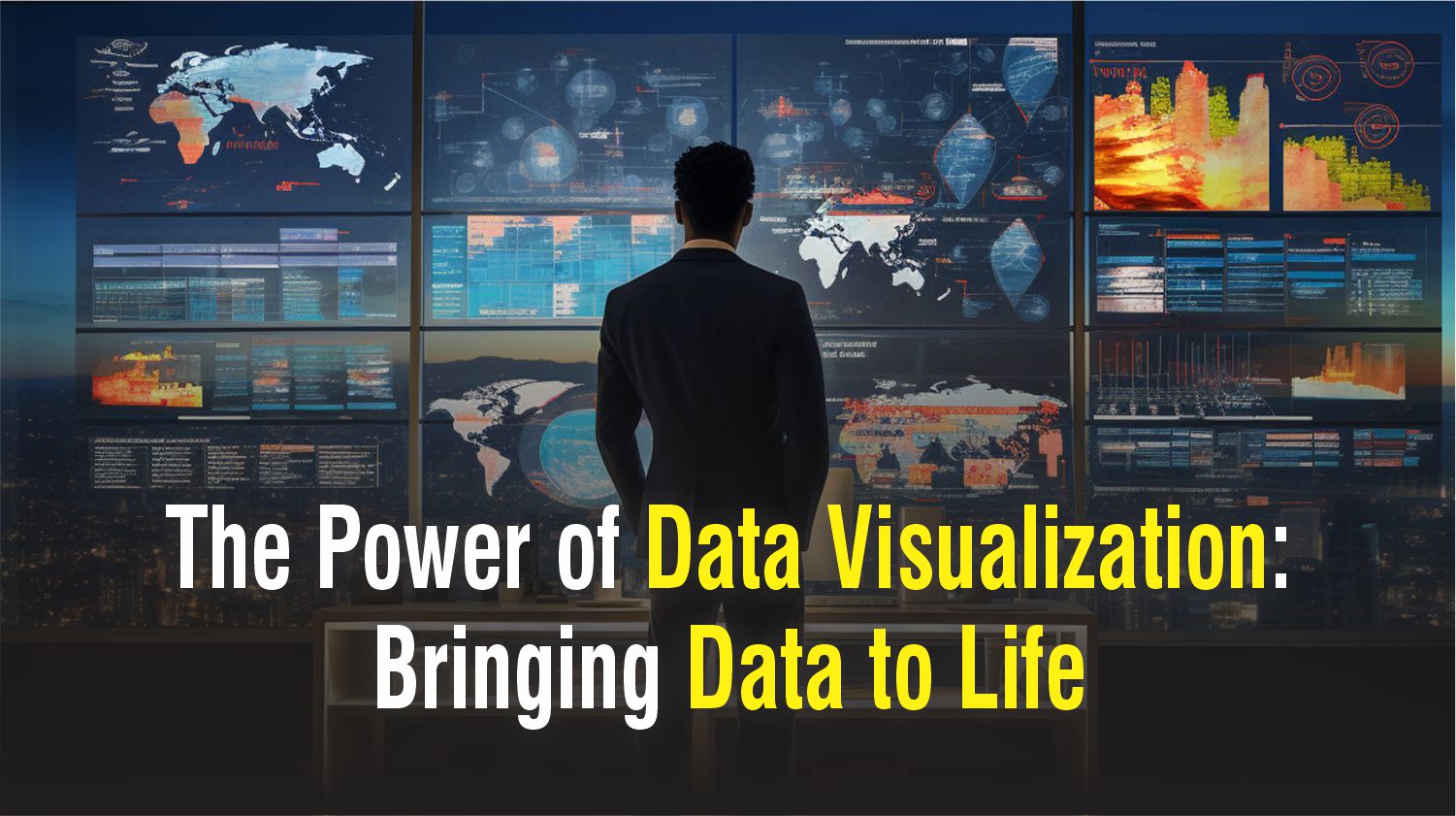Blogs On Programming

The Power of Data Visualization: Bringing Data to Life
on Apr 30 2025
Today, professionals have to work with an immense volume of data, ranging from financial and operational metrics to customer reviews and social media engagements. The challenge that companies encounter is no longer the absence of information, but rather understanding it all, and preferably getting there before their competitors!
This is where Business Intelligence (BI) comes in to become our master key. By implementing BI, professionals can release the power within these vast datasets and outmaneuver their competitors. BI tools enable us to turn raw data into accessible visual formats that are easily digestible and simplify complex information. By doing so they help teams to spot trends, extract meaningful insights, and make smarter decisions with speed and clarity.
Why Visualizing Data Is Essential
Picture yourself in front of a massive spreadsheet filled with numbers. Even if the data you are looking at is accurate and comprehensive, it is pretty challenging to extract any conclusions at a glance from such a database. Data visualization bridges this gap, turning numbers into charts, graphs, and dashboards that make trends and outliers stand out immediately.
Imagine a logistics manager tracking global shipments. Instead of flipping through dozens of reports, they can view a dashboard showing delivery statuses, inventory levels, and potential delays. This instant clarity allows them to act decisively and maintain smooth operations.
How BI-driven Visuals Deliver Value
Here’s how BI-driven visuals turn complex data into engaging, actionable insights:
Simplify complexity: Data visualizations condense vast amounts of information into concise, understandable visuals.
Facilitate collaboration: Charts and dashboards communicate insights in a way that teams across departments can easily grasp, fostering better alignment.
Speed-up decisions: With key metrics displayed clearly, leaders can respond to challenges and opportunities without hesitation.
Increase engagement: When data is presented visually, it becomes more relatable, encouraging more people to use it in decision-making.
Applications of Visualization Across Industries
In every sector, data visualization is revolutionizing how teams deal with data and use it for their business's benefit. For instance, let’s look at the key applications of visualization in the following sectors:
Healthcare
Hospitals utilize dashboards to monitor patient data and oversee inventory levels. These visual instruments offer a live summary of essential information, assisting healthcare professionals in managing resources effectively and enhancing patient care. Simplifying intricate metrics allows dashboards to help medical teams make informed decisions that enhance operational efficiency and improve patient outcomes.
Retail
Visualization tools such as heatmaps and trend analyses provide companies with a distinct perspective on customer behaviors and preferences. Retailers can examine buying patterns to handle inventory better, guaranteeing that in-demand products are consistently available while reducing waste. Such insights enable companies to develop focused marketing strategies that connect with their audience, thereby improving the shopping experience and boosting revenue growth.
Marketing
Marketing experts depend on data visualization to optimize their campaigns instantly. Dashboards monitoring engagement metrics, like click-through rates and conversions, offer prompt insights on which strategies are effective. This allows marketers to swiftly shift or enhance their strategies, making sure that resources focus on initiatives with the highest potential effect.
Utilizing BI-enhanced visuals, professionals in various industries are finding novel methods to analyze data and translate insights into action.
Tips for Designing Effective Dashboards
An impactful dashboard is about more than just adding visuals. Here are some principles to follow:
Focus on what matters: Highlight the metrics most relevant to your goals.
Choose the right chart: Select visuals that suit your data. For example, use line graphs for trends or bar charts for comparisons.
Keep it clean: Avoid clutter by prioritizing simplicity.
Draw attention to key insights: Use colors, annotations, or bold elements to emphasize important findings.
Tools to Start Your Visualization Journey
Platforms like Tableau, Power BI, and Looker make it easy for anyone—regardless of technical background—to create powerful visualizations. These tools offer templates and guides to help beginners start small while still delivering meaningful insights.
Getting Started
If you’re new to BI visualization, pick a dataset you’re familiar with and try creating a simple chart or dashboard. Focus on one key question you want to answer and use tools like Tableau or Power BI to design a visual that provides clarity. Feedback from colleagues can help refine your approach and ensure your visuals communicate effectively.
Building a Visualization-driven Culture
Incorporating visualization tools is only the beginning. For organizations to fully harness their potential, they need to invest in building confidence among their teams. Let’s see how they can do this:
Providing comprehensive training: Training sessions should be a priority, ensuring employees feel equipped to navigate and use BI tools effectively.
Fostering a culture of curiosity: In addition to technical abilities, creating a culture that prioritizes curiosity is also essential. When teams are motivated to investigate data and pose crucial questions, they are more prone to discover insights that foster innovation.
Integrating visualization into daily operations: Incorporating data visualization into routine activities like meetings and decision-making discussions guarantees that these tools become fundamental to organizational operations, improving both collaboration and results.
The Future of Visualization in BI
Data visualization is advancing in tandem with technology. Interactive dashboards, augmented reality enhancements, and AI-driven insights are simplifying data engagement. For example, augmented reality might enable warehouse supervisors to see inventory amounts instantly while they navigate through a facility.
AI-driven visualization is also growing. Modern BI tools can now recommend the best chart type for your data or automatically highlight critical trends. These advancements enable anyone to derive insights, bridging the gap between technical experts and decision-makers.
Harnessing the Future with Data Visualization
Data visualization turns complex datasets into engaging, usable insights. It's not merely about producing visuals; it's about developing a narrative that connects and inspires wiser choices. When executed effectively, data visualization enables teams to understand trends, recognize opportunities, and make decisions supported by clarity and accuracy. This renders it a crucial ability for experts steering through today's data-oriented environment.
The real strength of visualization is its capacity to unite teams around a common comprehension. In meetings or strategic conversations, an effectively crafted chart or dashboard can eliminate confusion, allowing decision-makers to concentrate on what is genuinely important. As an increasing number of organizations embrace visualization tools, individuals who excel in this skill will position themselves at the leading edge of innovation and leadership.
Looking forward, the prospects for BI and data visualization offer even more opportunities. As AI, augmented reality and predictive analytics evolve, the capacity to generate impactful visuals will not only stay significant but will also become a fundamental element of successful communication and achievement in various sectors.
To learn how to leverage BI in-depth, read Business Intelligence Essentials You Always Wanted to Know. It covers the entire spectrum of BI, enabling you to accelerate growth in today's competitive business landscape. This book is a part of Vibrant Publishers’ Self-Learning Management Series and is suitable for entrepreneurs, leaders, and professionals.
Business Intelligence Essentials You Always Wanted to Know - A guide on how to turn raw data into accessible visual formats.
Find out more about the book here:
Link to the book: Business Intelligence Essentials You Always Wanted to Know
Author: Irene Tobajas
Press Release: Vibrant Publishers Launches "Business Intelligence Essentials" to Empower Professionals and Leaders
Also Read: Can AI take over Data Analytics?3 Unexpected Applications of Big Data AnalyticsTop 10 Hadoop Big Data Questions and Answers

